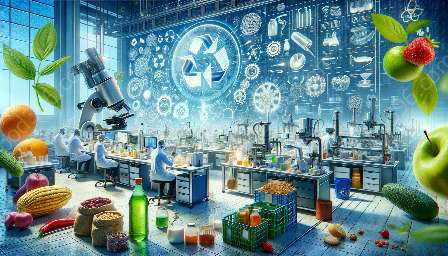Food packaging technology has undergone a significant evolution to meet the demands of modern consumers, food product development, and food science and technology. From traditional methods to innovative solutions, the packaging of food products has played a crucial role in preserving, protecting, and presenting food to consumers.
As the food industry continues to expand and diversify, the importance of packaging technology in ensuring food safety, shelf life extension, and convenience cannot be overstated. This article explores the latest trends and advancements in food packaging technology, its compatibility with food product development, and its impact on food science and technology.
The Role of Food Packaging Technology in Food Product Development
Effective packaging technology is essential for food product development as it influences various aspects of the product, including preservation, transportation, and visual appeal. Packaging not only protects the food from external factors such as light, moisture, and air but also serves as a platform for branding and communication with the consumer.
With the growing emphasis on sustainability and environmental impact, food product development teams are focusing on eco-friendly and innovative packaging solutions that reduce waste and minimize the carbon footprint. Advanced packaging technologies play a pivotal role in aligning food product development with consumer preferences, regulatory requirements, and industry standards.
The Intersection of Food Packaging Technology and Food Science
Food packaging technology intersects with food science by integrating scientific principles to enhance the safety, quality, and shelf life of food products. Innovations in materials, designs, and processes have revolutionized the field of food science and technology, allowing for the development of packaging solutions that cater to the specific needs of different food products.
Furthermore, the integration of intelligent packaging technologies, such as temperature-sensitive indicators and antimicrobial films, enables food scientists to monitor and maintain the quality and integrity of food throughout the supply chain. This integration underscores the crucial link between food packaging technology and food science, shaping the future of food safety and consumer satisfaction.
Advancements in Food Packaging Technology
From traditional methods such as glass jars and tin cans to the contemporary innovations like modified atmosphere packaging and active packaging, the landscape of food packaging technology has witnessed remarkable advancements. The emergence of intelligent packaging, biodegradable materials, and nanotechnology-based solutions has paved the way for sustainable, efficient, and intelligent packaging systems.
Smart packaging technologies, including QR codes for traceability and freshness indicators, provide valuable information to consumers while enhancing transparency and trust. Additionally, advancements in barrier materials and active packaging components contribute to extending the shelf life of perishable food products, reducing food waste, and enhancing the overall consumer experience.
Implications for Food Industry and Consumers
The evolution of food packaging technology has far-reaching implications for both the food industry and consumers. For the food industry, embracing innovative packaging technologies offers a competitive edge, efficiency in supply chain management, and compliance with regulatory standards. Moreover, the integration of sustainable packaging solutions aligns with corporate social responsibility and environmental stewardship, contributing to a positive brand image.
Consumers, on the other hand, benefit from reliable packaging that ensures the safety, freshness, and convenience of food products. The visual appeal and functional aspects of packaging play a critical role in consumer purchasing decisions, influencing brand loyalty and perception. With increased awareness of environmental issues, consumers are also inclined towards eco-friendly packaging options, driving the demand for sustainable and recyclable packaging solutions.
Conclusion
Food packaging technology is an integral component of the modern food industry, intertwining with food product development and food science and technology. The continuous evolution of packaging solutions reflects the dynamic nature of consumer preferences, technological advancements, and environmental considerations. As the industry strives for greater sustainability, safety, and innovation, the symbiotic relationship between food packaging technology and other food-related disciplines continues to shape the future of food products and consumer experiences.

